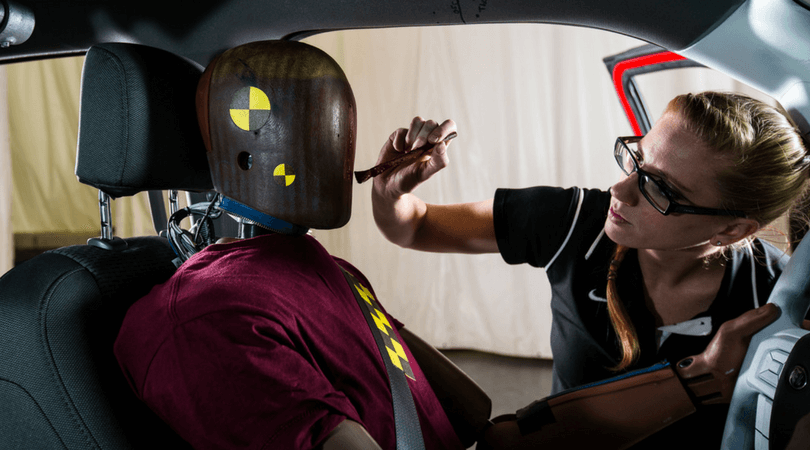April is #NationalCarCareMonth! Preventative maintenance increases the longevity of your car AND allows for the features on your vehicle designed to keep you safe to continue to work properly.

Calspan is a world leader in automotive safety research, helping to make the roads a safer place, providing dynamic test services to manufacturers to ensure their products meet the highest safety and/or performance standards before going to market.
Calspan’s ground transportation test services includes automotive crash testing in an indoor or outdoor track setting, vehicle crash simulation with a HYGE sled for various components in a vehicle such as child restraint systems , and tire performance testing on the world’s largest indoor flat track.
Calspan’s crash test operations team would like to use #NationalCarCareMonth to remind you how to be a safer driver.
Check that your seat belt is working properly and wear it! – The safety features in your car were designed to work together. Airbags and structural features on the vehicle are designed to be successful in protecting occupants when seat belts are properly worn by passengers. According to the National Highway Traffic Safety Administration, 48% of passenger vehicle occupants killed in 2015 were unrestrained. Stay safe, buckle up.
Position yourself for success – In the driver’s seat, make sure to adjust your seat so that you can comfortably reach the pedals and steering wheel. Don’t forget to adjust your headrest to the correct height in the case of a rear end collision to reduce the chance of head and neck or any whiplash related injuries. Steering wheel hand positions are also important for safe driving and reducing injury in an accident. Avoid holding the wheel at the 2 and 10 o’clock positions, instead try to stay between the 7 & 8 o’clock and 4 and 5 o’clock with your left and right hands respectively.
Be prepared for the unexpected – In the unfortunate event that you are involved in an incident when your car is working improperly it’s good to have an emergency kit in your vehicle. Whether it’s getting a flat tire or being stranded on the road due to bad weather or even an accident, ensure you have the proper supplies to safely navigate the situation. It’s always a good idea to have roadside flares or lights, blankets, water, gloves, granola bars on hand in the event of an emergency situation.
Cars are crash tested at Calspan to make sure that cars comply with safety standards set by the National Highway Traffic Safety Administration (NHTSA). A crash test is a form of destructive testing usually performed in order to ensure safe design standards. Vehicles are propelled against poles, barriers, and other vehicles in a controlled setting to understand how they react in certain situations. Crash test dummies (also known as Anthropomorphic test devices or ATD’s) are placed in the car to see how humans might react in a crash situation. Sensors in the dummy record several-dozen measurements related to the forces exerted on its head, neck, chest, and lower extremities. Each of these measurements can be compared to “injury assessment reference values” to determine the chance that it would cause a serious injury to a real person.
To learn more about crash testing at Calspan, click here.